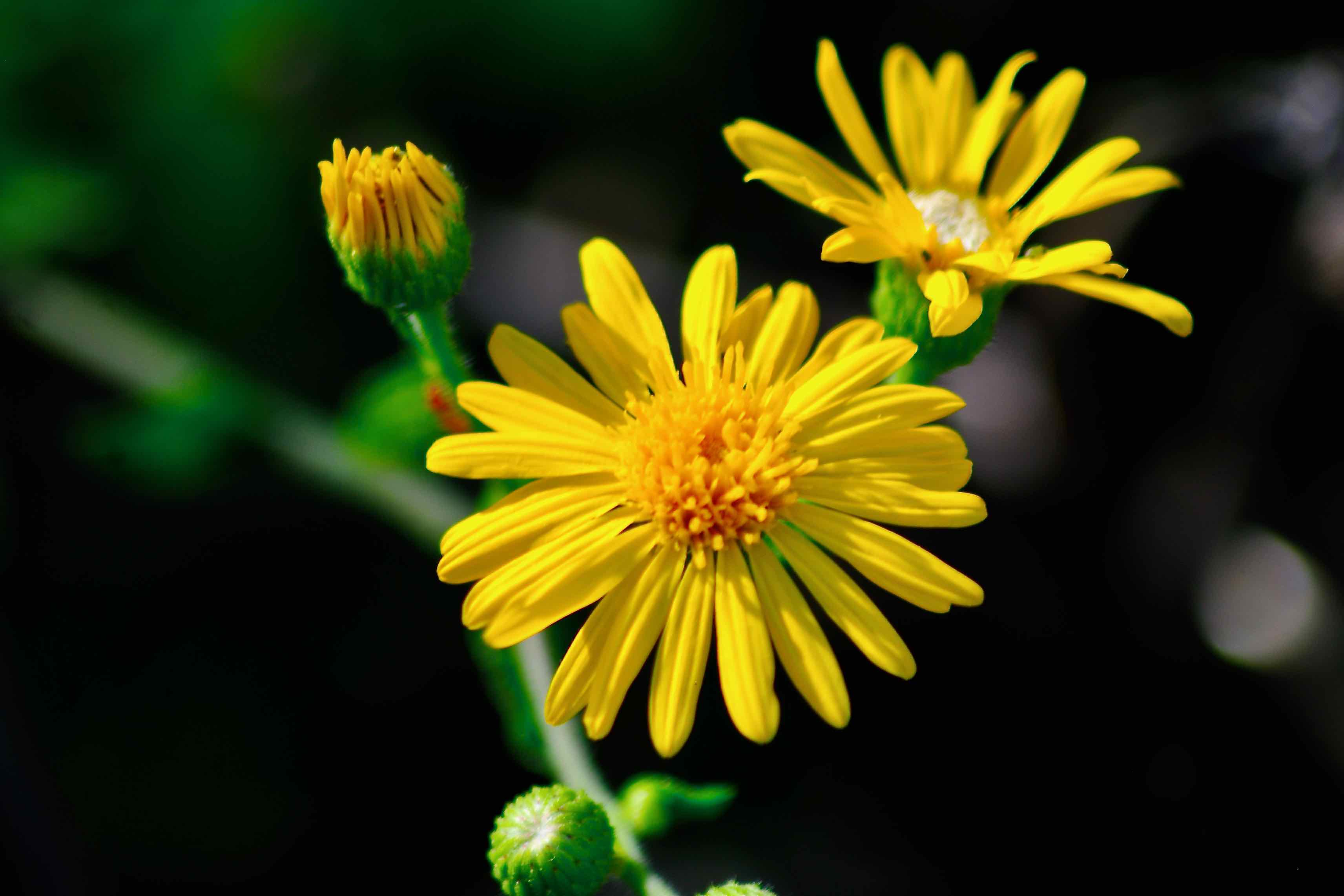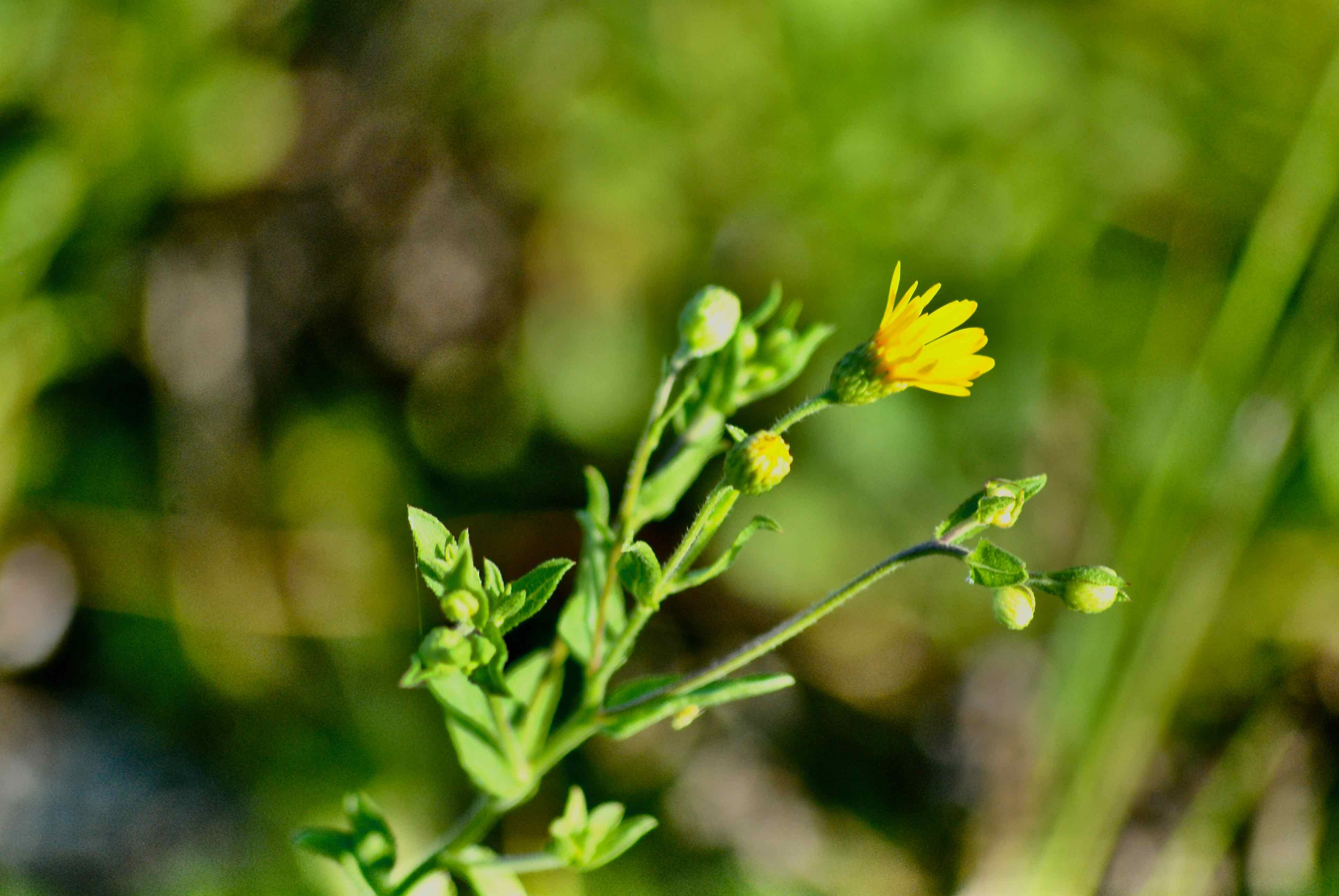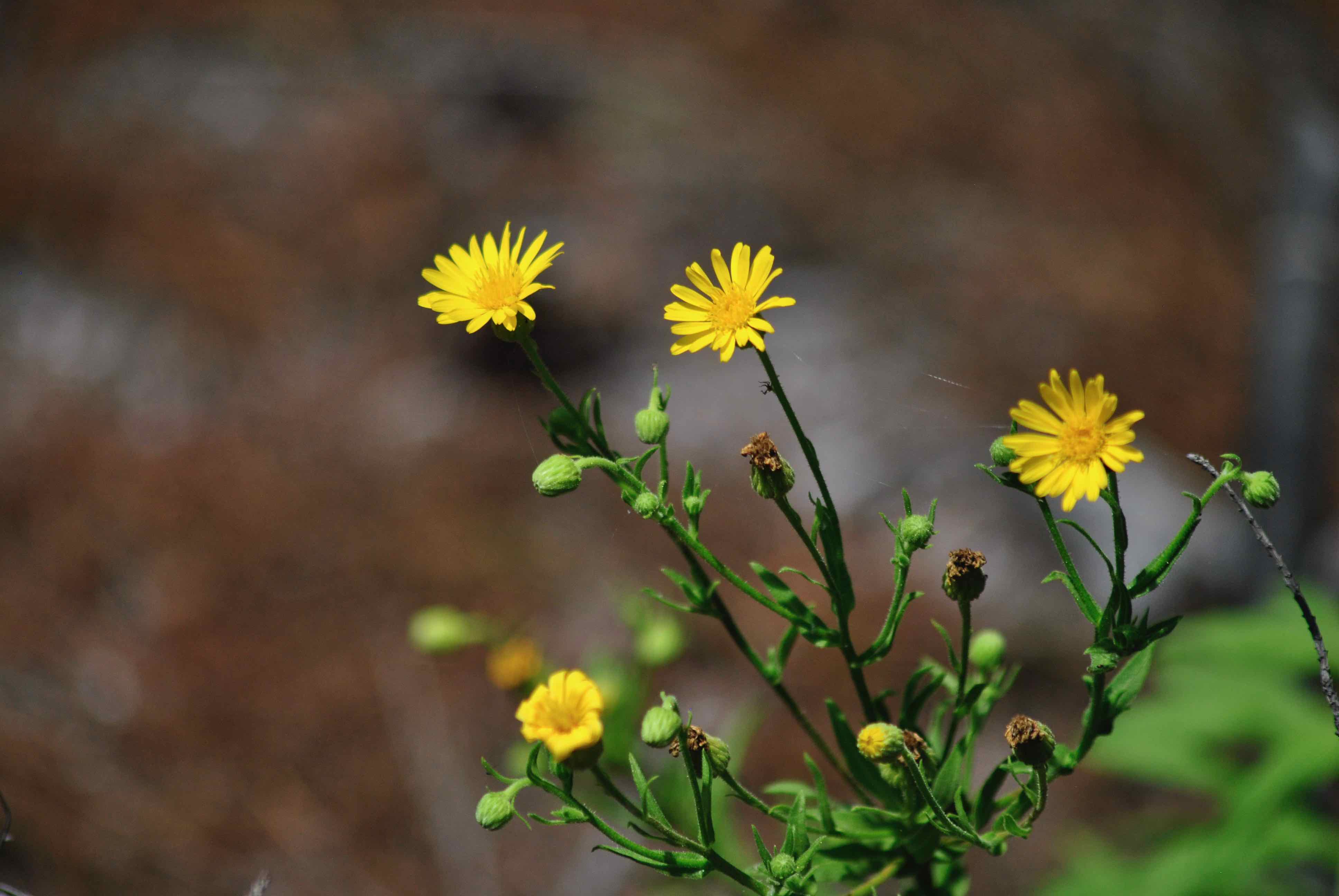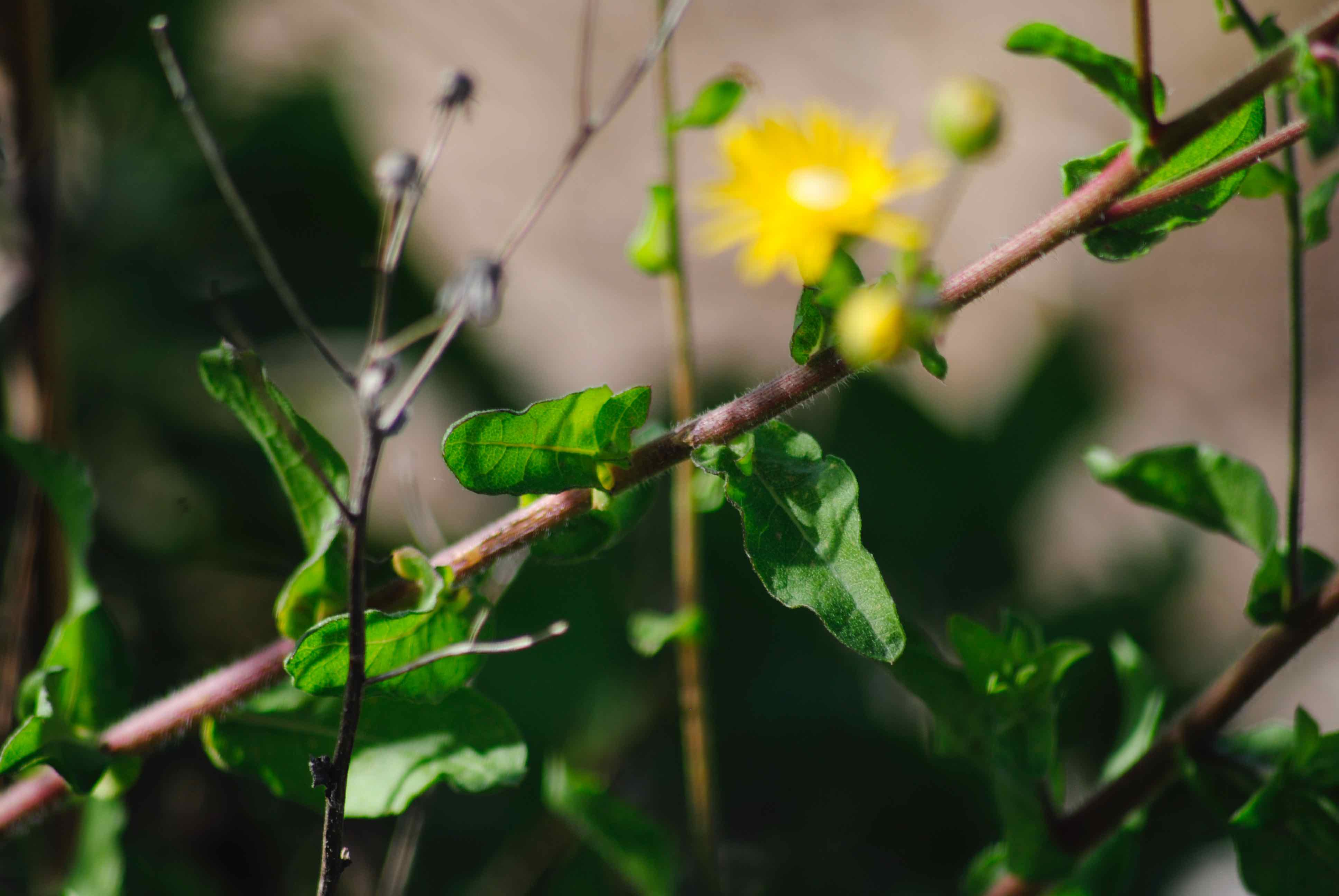
Camphorweed, photographed at Pine Glades Natural Area, Jupiter, Palm Beach County, in February 2015.
Camphorweed, Heterotheca subaxillaris, is a bit of sunshine even on the most gloomy of days. Bees, butterflies and other pollinating insects love it. Cows, not so much. For humans, it can be a bit of a weedy pest, but there are those golden-yellow flowers.
Camphorweed is a Florida native, found throughout most of the state. One notable exception: it isn't found in Monroe County, either on the mainland or the Keys. It does grow in much of United States from New York southward, coast to coast, and in northern Mexico.
In most of its range, it's a common plant; in Kentucky, however, a variant of camphorweed called broadleaf golden-aster is listed as threatened.
It's found in pinelands, in open areas along the the coast and in disturbed areas such as roadsides. It likes full sun, will grow in poor soil and it is highly drought resistant.
Camphorweed's most noticable feature are the flowers, of course. Here in South Florida, they bloom year round. To call them showy is an understatement. The plant itself can reach three feet in height, and usually has kind of a lopsided appearance. The leaves are arrow-shaped and a bit wavy like a potato chip rather than flat.
The leaves when crushed or bruised give off a camphor-like aroma, some would say odor, hence the name. Cattle won't touch the stuff if they come across it in a field. The late Daniel F. Austin, in his book, Florida Ethnobotany, noted that a cow would have to be very hungry to munch on camphorweed.
It's not something you'll find in seed catalogs or growing in your local nursery, but camphorweed is cultivated for use in restorations and natural landscapes, and in wildflower gardens. It grows easily from seed. The one caveat, again, is that it can be weedy. Oh and the usual caveat: collecting seeds on public land is frowned upon, as in illegal.
Austin also noted that there is no record of Native Americans within the U.S. using camphorweed medicinely. Other Heterotheca species were commonly used, however.
Austin also wrote that a friend of his named John Semple had found records of its use in Mexico. Turns out those Mexicans were displaced Kickapoo from Wisconsin who fled south of the border to avoid persecution. They used camphorweed to treat heat rash, burns, itches and to ease menstrual pain.
Camphorweed is a member of Asteraceae, the sunflower and daisy family. It is also called false golden-aster.
Pine Glades Natural Area



